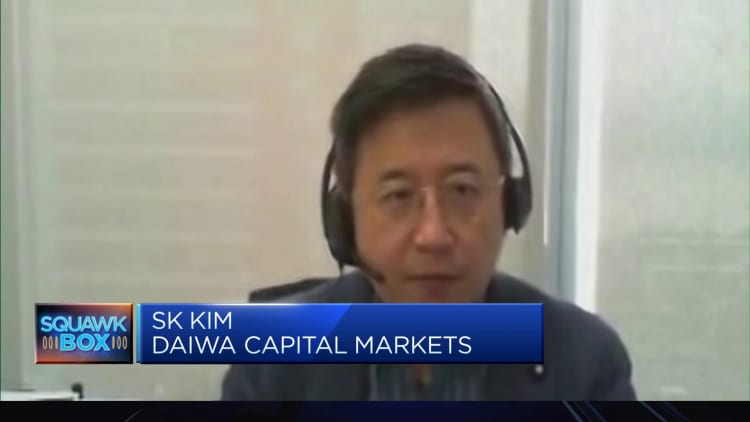[ad_1]
Samsung is the world’s biggest maker of memory chips.
Jakub Porzycki | Nurphoto | Getty Images
Samsung Electronics on Tuesday said it expects to post a 35% drop in operating profit in the fourth quarter of 2023, as a rebound in semiconductor prices likely narrowed losses in the South Korean company’s biggest profit-driving segment.
Samsung said that for the October-December quarter, operating profit is likely to be 2.8 trillion South Korean won ($2.13 billion), down 35% from the same period a year ago where the firm reported an operating profit of 4.31 trillion won. Operating profit was 2.43 trillion won in the previous quarter.
Fourth-quarter revenue likely fell 4.9% from the same period a year ago to 67 trillion won, the firm said in the statement.
Samsung is the world’s largest maker for dynamic random-access memory chips which are found in consumer devices such as smartphones and computers.
“We estimate memory prices started to rebound from 4Q23, driven by production cuts by suppliers and a recovery in demand for mobile and PC,” said SK Kim, analyst at Daiwa Capital Markets, in a Jan. 4 report.
Memory chip prices fell drastically last year, as a result of excess inventories post-Covid and weak demand for end products like smartphones and laptops.
This has hit Samsung’s earnings hard. Samsung’s third quarter operating profit plunged 77.6% from a year ago, even though it came in better than expected. Operating profit in the second quarter slumped by 95% compared to the same period a year ago.
The demand for AI across all major applications will drive the overall semiconductor sales market to recover in 2024.
In late October, Samsung and SK Hynix – the world’s second-largest DRAM memory chip maker – signaled during their third quarter earnings calls that weak demand may have finally bottomed out following production cuts.
“We expect further price hikes in 1H24 and a marked rebound in earnings for memory makers in 2H24 and 2025,” said Kim of Daiwa Capital Markets, referring to the first and second half of this year.
“As such, we anticipate tailwinds for share prices in the near term.”

Memory chip prices have started increasing since the start of November, thanks to “memory manufacturers’ strict control of supply and output,” according to Galen Zeng, senior research manager of semiconductor research at IDC.
“The demand for AI across all major applications will drive the overall semiconductor sales market to recover in 2024,” said Zeng in a Dec. 21 report.
“The semiconductor supply chain, including design, manufacturing, packaging, and testing, will bid farewell to the downturn in 2023.”
This is breaking news. Please check back for updates.
[ad_2]

